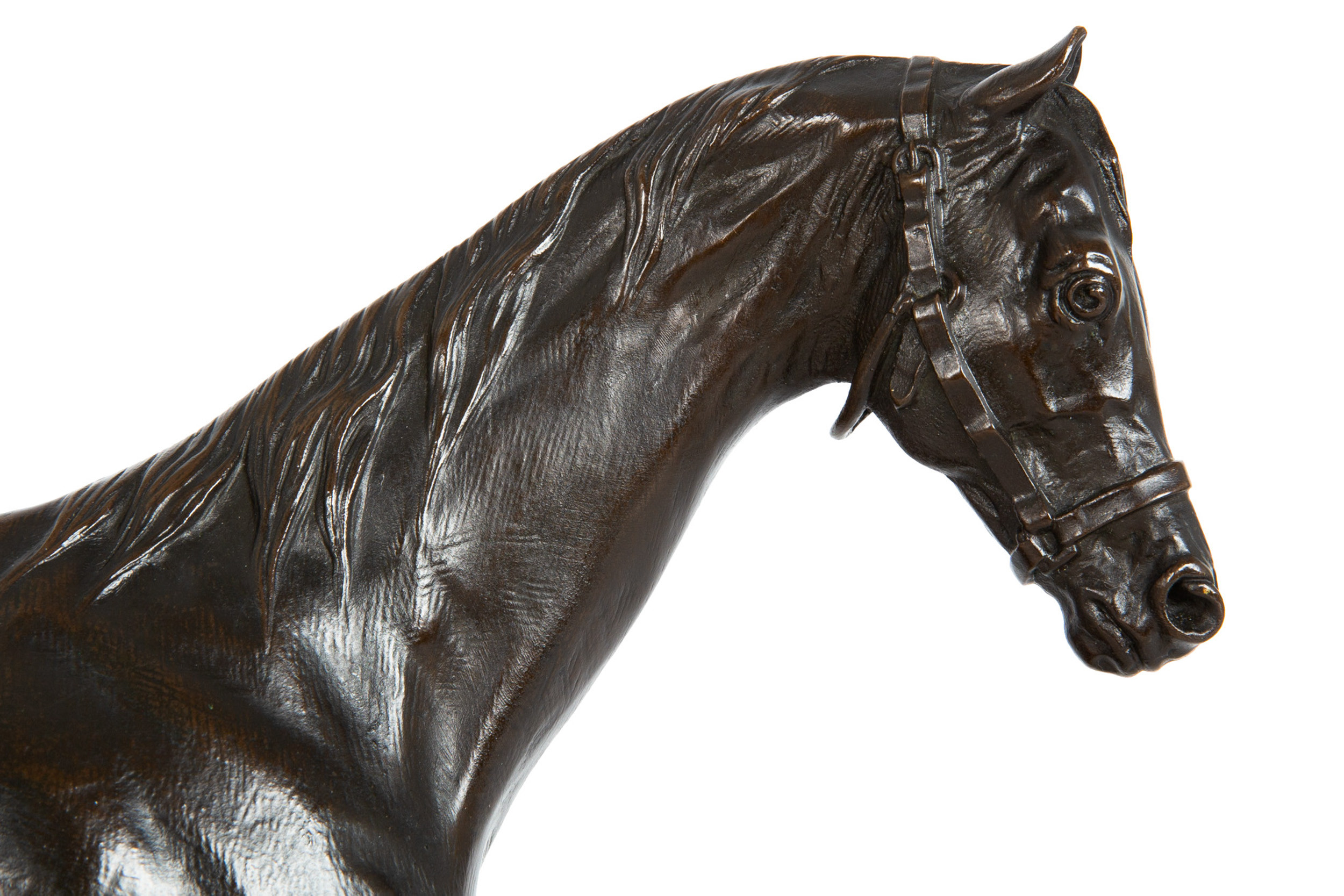There are no products listed under this category.
Lenordez, Pierre

Pierre Lenordez, born in 1815 in the town of Vaast within the Manche region in Northwestern France, established a distinguished career as an Animalier sculptor after settling in Caen. While he did create some figurative statues, like the 1887 sculpture of "Esclave et Sultane Fuyant du Sérail" and models of various animals, his renown primarily stems from his equestrian sculptures. He was particularly astute in his representation of the horse and this became his signature subject. He produced these distinctive racehorse portraits in a manner clearly developed from an appreciation for the racing portraits of the first half of the 19th century, capturing his horses with a distinct angularity in their heads with slender drawn noses and nostrils flared with an attentive expression in their eyes while the body is always anatomically exacting in a manner that captures even the slightest tention in muscles and the important veins.
Lenordez's journey as a sculptor was marked by his debut at the Salon in 1855 with a wax model named ‘The Baron,’ representing a stallion from the Imperial Stud in Bois de Boulogne, Paris. He consistently participated in the Salon exhibitions until 1877, showcasing a wide range of equine subjects, including Arab Stallions, brood mares, foals, and various hunting and racing scenes. His sculptures often represented real-life racing champions, notable bloodline progenitors, and other significant horses in the equestrian world. The plaques accompanying many of his works provided details such as the horse's name, its race achievements, and sometimes its lineage.
In addition to his sculptural work, Lenordez was also a dedicated educator, spending a decade teaching at the Fine Arts Academy of Caen. Among his students was the Romantic sculptor Arthur Jacques Leduc. His profound knowledge of horses led him to author "The Horse," published in 1886, a testament to his expertise in the field.
The casting of Lenordez's sculptures was primarily managed by the foundries of Boyer and Duplan et Salles, both known for their fine, detailed casting work, though some work was also cast by the smaller but highly skilled foundry of Graux-Marly. His sculptures are recognizable by their dark brown to black patinas, often highlighted with golden tones, giving them a characteristically aged appearance.
Through his detailed equestrian sculptures and his contributions as a teacher, Lenordez has left a lasting impact on the field of Animalier art, particularly in the portrayal of horses, a legacy that continues to be celebrated and admired.
Artist Listings & Bibliography:
- Dictionnaire des Sculpteurs de l'École Française, Vol. III, Lami, p. 315
- E. Benezit Dictionary of Artists, Vol. VIII, Gründ, 2006, p. 832-833
- Bronzes of the 19th Century: Dictionary of Sculptors, Kjellberg, 1994, p. 427-428
